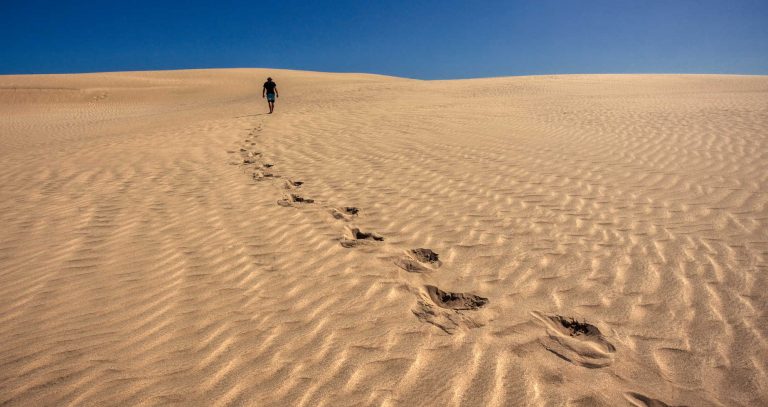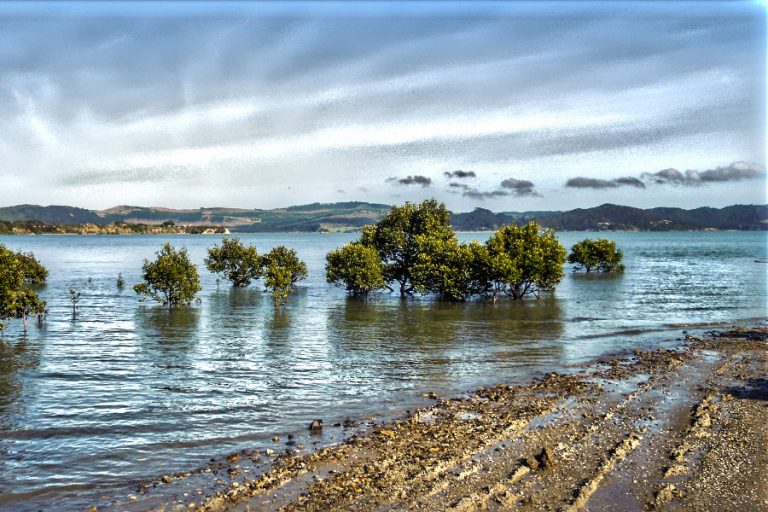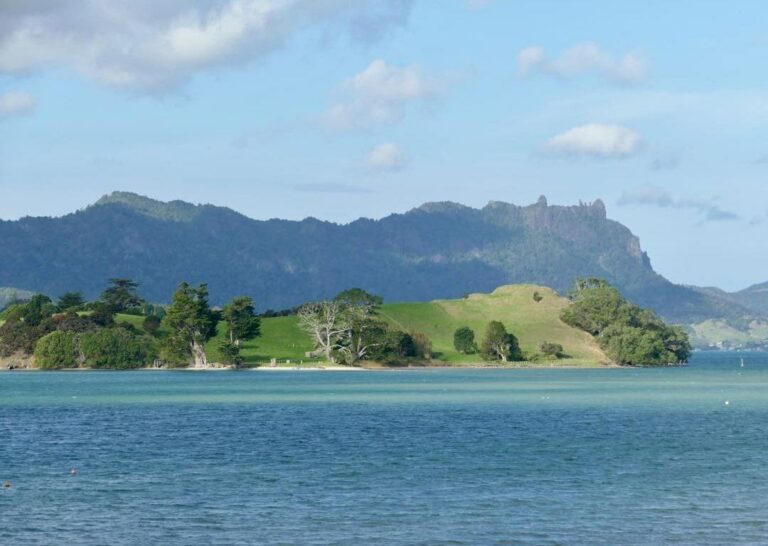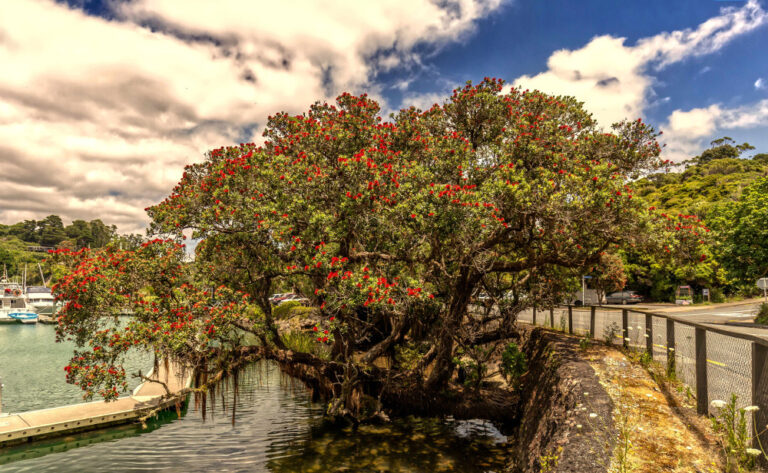Holiday inspiration, ideas about where to go and what to see in Hokianga
A harbour framed by soaring sand dunes is a majestic sight as drivers sweep around the curve into the Hokianga Harbour from Auckland. While there are natural marvels such as Koutu Boulders and glorious walks the essence of Hokianga is its historical past and contemporary narratives of East Polynesian settlement and the birth of Maori culture. The next wave of immigration are Europeans in the 1830’s onwards and this tale is wrought large on the landscape of Hokianga. Here are some ideas where to go to listen to the story of the Hokianga.
Best time to visit Hokianga Harbour
Year round.
Winterless North is a great escape for kiwis looking for sunshine.
Getting to Hokianga Harbour
Opononi is approximately a 3.5 hour drive from Auckland travelling through the home of Tane Mahuta, the Waipoua forest, and a 1 hour drive from Kerikeri airport.
HOREKE
Horeke is the second oldest town in New Zealand and, more importantly the site of the first pub. Situated on the shorefront it served ship builders working in the first commercial shipbuilding industry based in Horeke. You will hear stories about New Zealand’s first documented murder trial at the nearby Methodist Mission. Perhaps you will hear about Cannibal Jacks, Hokianga’s first European settler. Among his most notorious exploits was practising cannibalism. Jack’s life in Hokianga was at Martin’s Point. Immersed in Maori culture and practice he was fluent in Te Reo. There is very little physical evidence of his occupation however your imagination is all you require while listening to the narrative of Jack’s life in Aotearoa.
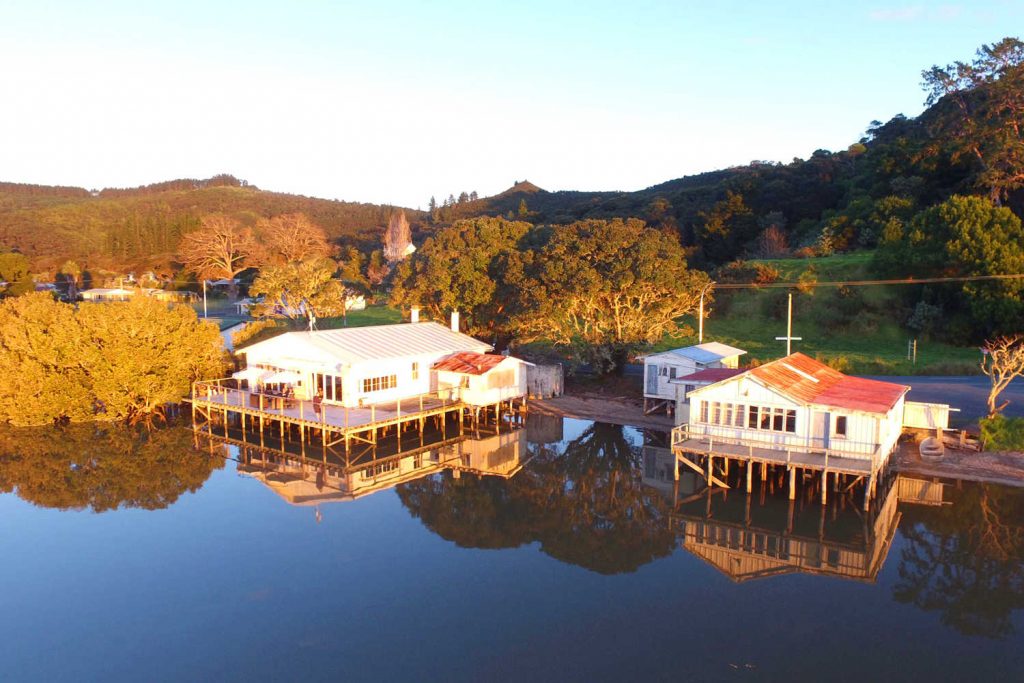
Horeke Tavern
Records of a pub selling beer dates to the 1820’s. Although, there is the inconvenient fact that the pub did not have a liquor licence, that did not stop business. The interesting part of this story is that the Northland settlements already had bureaucrats issuing liquor licences. The Horeke Tavern was also the site of the first government organised hui. Governor Hobson trudged for six day to reach Horeke with the freshly inked Treaty of Waitangi. The balance of the Northland chiefs signed at the nearby Mangungu Mission station and then it was celebration time in the pub grounds.
“This meeting has been described as the ‘first government funded hui’, setting the scene for today’s sausage roll morning teas in government departments. The Postal Service also has its origins here, with a horseback service between the Hokianga and the Bay of Islands starting three months after the Treaty signing.” as described by NZPlaces. Definitely a place to visit to check out where New Zealanders got the idea of sausage rolls as a food group.
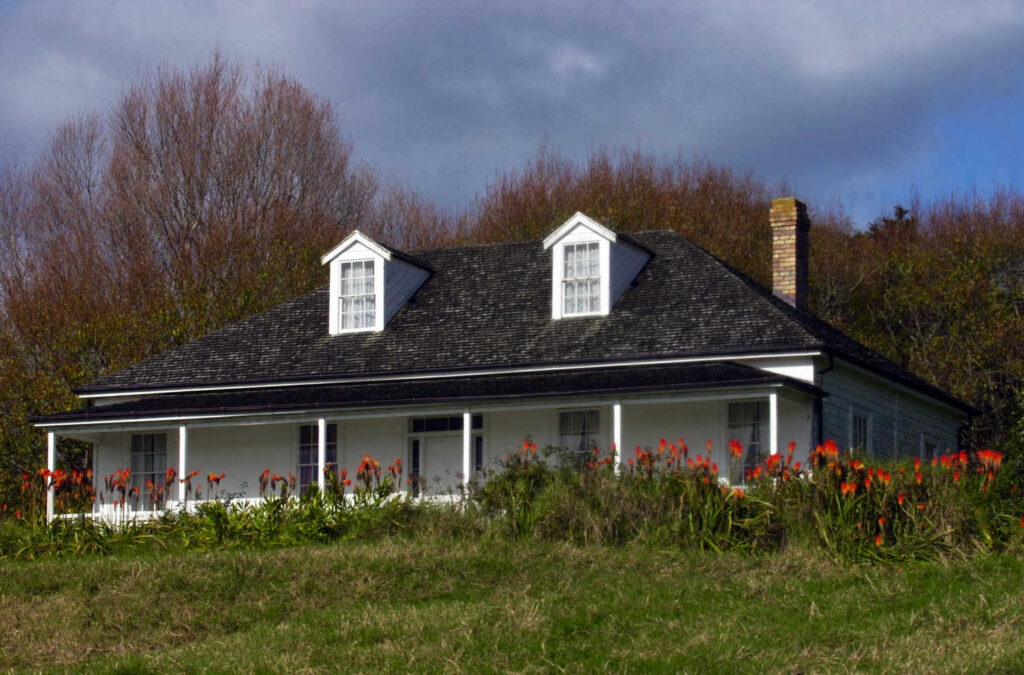
MANGUNGU MISSION
A hill top stunning view over the Hokianga Harbour is a strategic position for the newly established Wesleyan Mission station in 1828. The mission station is the site of the largest signing of the Treaty of Waitangi with over 70 chiefs in attendance. It was estimated over 3,000 were witnesses on 12th February 1840. Another first for Aotearoa was the importation of honey bees, with the subsequent contribution of bees to the pollination of newly introduced fruit trees and development of a pastoral economy. The first grapevines were also introduced at Mangungu, and throughout time our wine industry has developed into our 9th largest export.
Mangungu Mission Station visit, via the harbour, is dependent on the tide. You will hear stories about how an ancestor Thomas Cassidy played a part in the signing of the treaty and his role in the establishment of Catholicism here in Aotearoa. The area is significant for the contribution to the story of trans-Maori sovereignty and the importance of identity and culture in current society.
Mangungu Mission Station
Address, Motukiore Road, 3km from Horeke on the shore of the Hokianga Harbour.
Contact Information:
- Phone: +64 9 405 9734 (c/- Te Waimate Mission)
- Email: tewaimate@heritage.org.nz
Opening Hours
- Closed for Winter for scheduled maintenance
- Summer opening hours to be determined.
Admission: fees apply
Signal Station
Five ships had been shipwrecked in the late 1820’s. This led to merchant seaman John Martin, who had made Hokianga his home, feel something should be done to warn ships of the sand bars and dangers facing entry into the harbour. Together with local chief Moetara a pilot service, in the 1830’s was set up. He erected a signalling mast on the high point of the South Head. According to some accounts he was not paid for the service until he was officially appointed. The mast remained operational until 1951 when technology and decreased harbour use led to closure. The final flagstaff still can be found in Opononi above the R.S.A. hall in Opononi, and the last signal light is in the local museum.
(Opononi) Omapere Museum is a treasure trove of letters, documents, memorabilia and artefacts relating to the Hokianga. Volunteers have ensured past actions, people and events are recorded. Check with the museum for opening hours or to make an appointment.
Check DOC resource for up to date information.
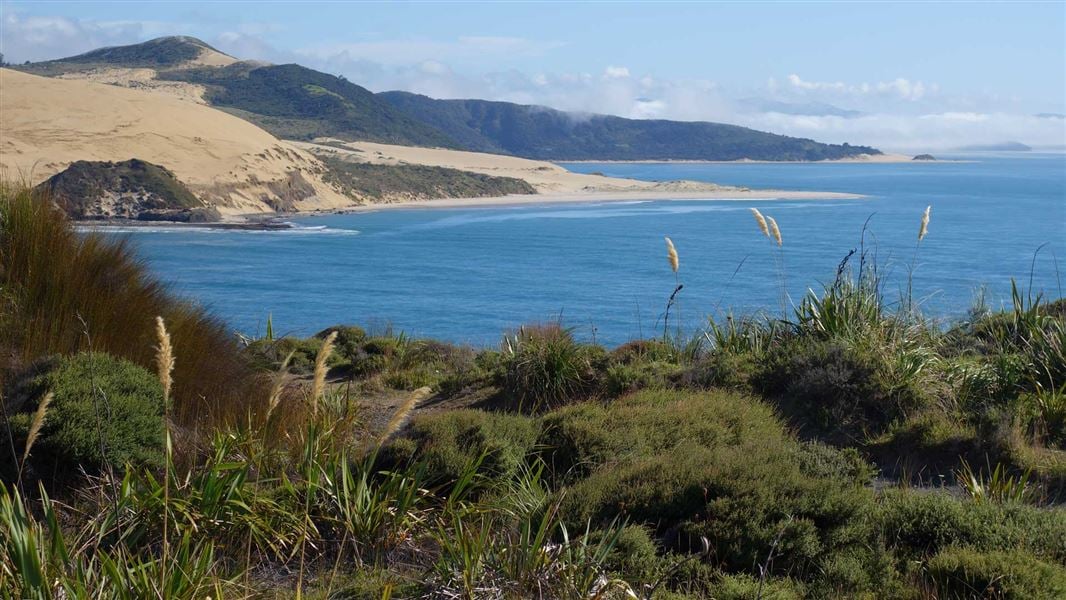
KUPE CENTRE
Tour Manea Footprints of Kupe is an interactive centre focused on retelling the story of the East Polynesian navigators and the emergence of Maori culture. Oral traditions, by their nature, are reinterpreted by each generation acting as a generational guardians. The promise of a dedicated centre enabling visitors to experience the stories is an exciting initiative for the Hokianga.
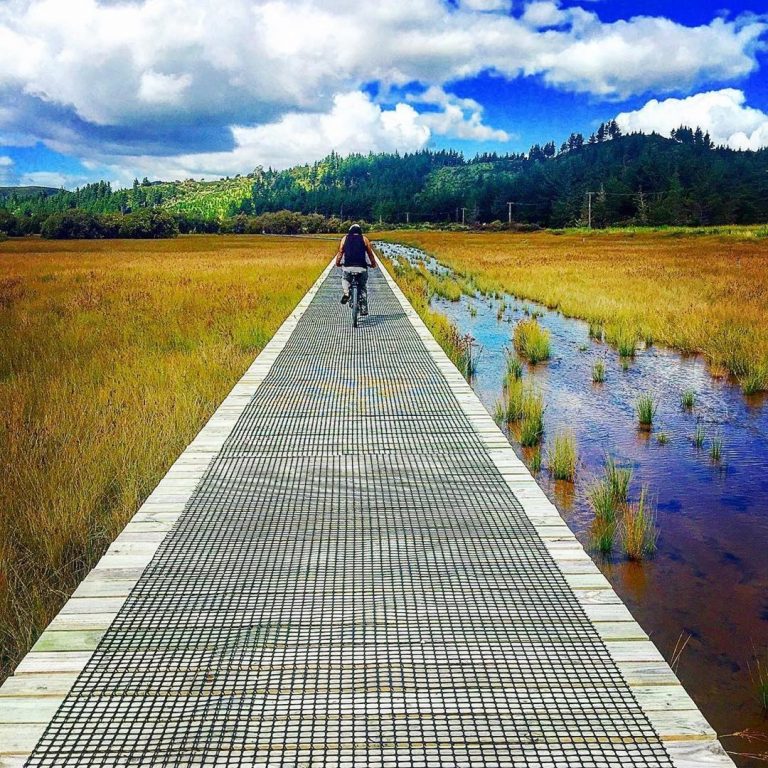
A great opportunity for visitors to hear, from the locals the story of Polynesian navigation and the links of Maoris to the ocean, the people of the Pacific and how human migration has shaped identity and New Zealand.
Located at 17 State Highway 12, Opononi. A stone statue of the dolphin playing with a child by Russell Clark was erected in Opononi in 1960. Following vandalism this was replaced by a bronze casting in 2013, with the restored original put on display at the Hokianga Historical Society’s Museum at Omapere. Wikipedia.
- Location: Opononi main street
RAHIRI MONUMENT
Who needs a statue of Nelson when New Zealand’s got world class military strategist like Rahiri. He was a paramount chief in the seventeenth century. A monument to Rahiri stands on the summit of Whiria mountain. As does the site of a strategic Pa. The position made the Pa impregnable and the area was never conquered. Rahiri descendnts are Ngapuhi from the two marriages that cemented his position in the north. For more historical information consult Rāwiri Taonui, ‘Ngāpuhi’, Te Ara – the Encyclopedia of New Zealand, Ngāpuhi. Story by Rāwiri Taonui, published 8 Feb 2005, updated 3 Mar 2017.
Excerpt from Encyclopedia of New Zealand, “Ngāpuhi
by Rāwiri Taonui … The magical light from Te Ramaroa mountain first guided Kupe into Hokianga Harbour. Many other sacred mountains support the house of Ngāpuhi, a people who played a central role in Māori history. Lands, Ngāpuhi are the largest tribe in New Zealand. Their heartland lies at Te Tai Tokerau (the northern tide) in the far north. The territory stretches west to east from Hokianga Harbour to the Bay of Islands, and southward to Maunganui Bluff and Whāngārei. The following chant likens the lands of Ngāpuhi to a traditional house”.
RAWENE
Quirky Rawene, departure point for Hokianga ferry and home of The Boat Shed Cafe. Allow several hours to amble around Rawene, popping into the local cafe / art gallery, the puzzle shop and simply walking around the town absorbing the sense of community. There is a wetland walk past Clendon House well worth a detour.
Shops such as
- Simply FUN, the puzzle store owned and operated by a world class puzzle maker. The building was rented by the local barrister, David Longley, the vaunt for his papers former PM of NZ is still on the premises.
- No 1 Parnell. Rawene, art gallery and cafe is a community hub, a place to watch people coming and going on the ferry, browse through art on display and available for purchase.
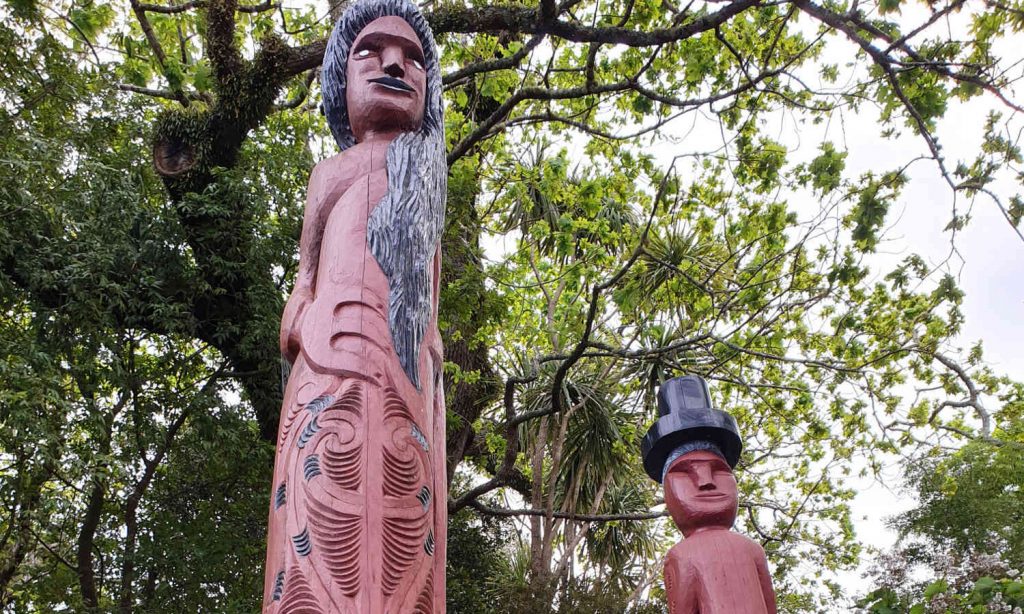

Rawene Clendon House
Clendon House, check for details as it is not open every day. Clendon Cottage, a pretty cottage was built in the bustling 1860s by James Clendon, a trader, shipowner and magistrate. After his death, his 34-year-old Māori widow Jane was left with fourteen children and an enormous debt of £5000. Nothing like determination and an entrepreneurial spirit. Jane managed to clear the debt and her descendants remained in the house until 1972. It’s now administered by Heritage New Zealand.
KOHUKOHU
Kohukohu is a historic settlement on the Hokianga harbour now home to a creative community of artists and craftspeople. The town buildings are bright, cheerful and festooned with window flower boxes, gardens full of oaks, willows and laden lemon trees. There are three galleries Galleries – Kohukohu.com for opening hours you will need to check several days before your intended arrival. In the peak season the galleries are usually open between 10.00am to 3.00pm otherwise by appointment.
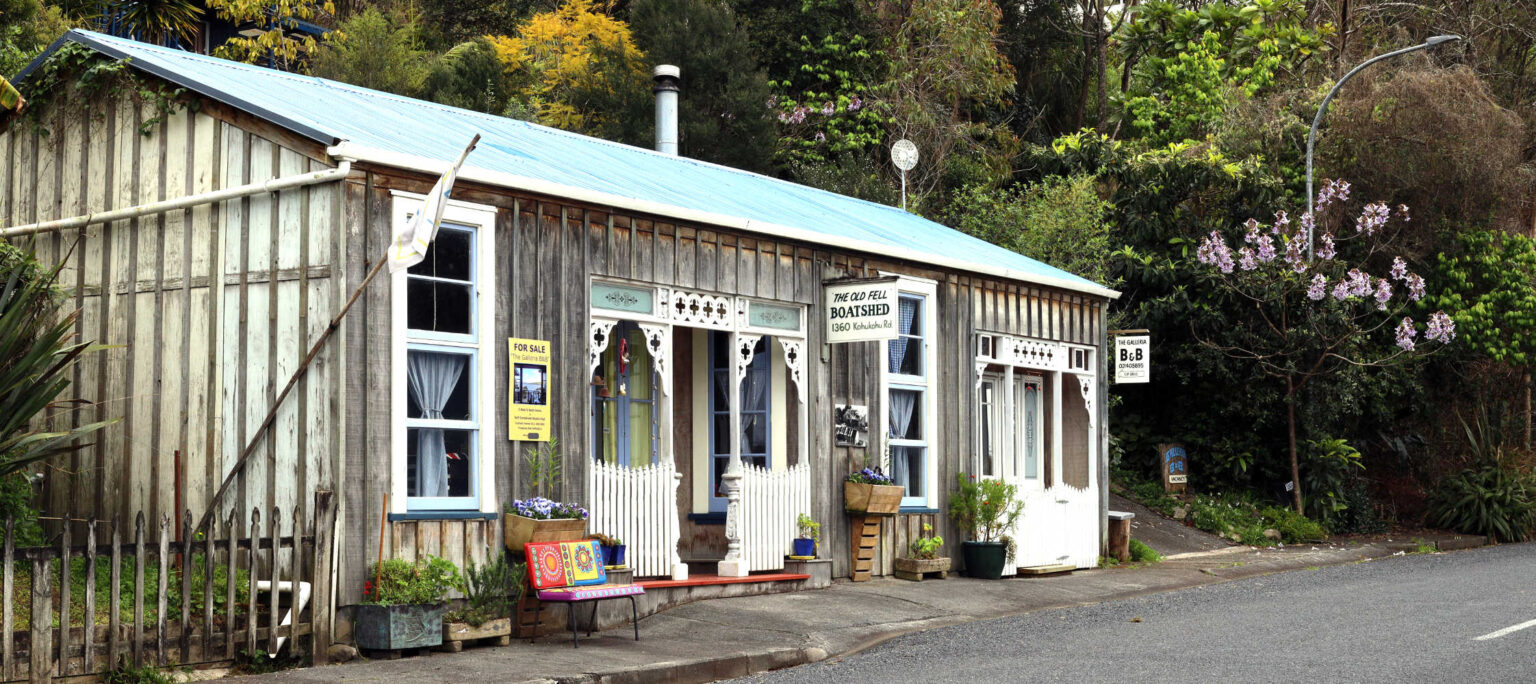

Selfie location: The abandoned wharf piles, the World War II memorial are atmospheric photo moments.
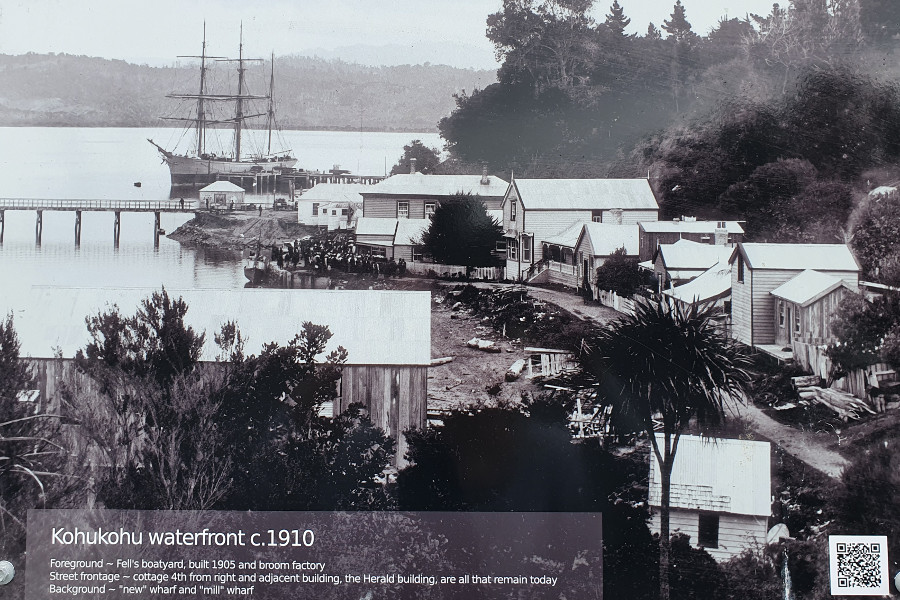
Kohokohu was the site of major kauri logging operations where entire hillsides were stripped of their trees. The first power timber mill was built in Kohukohu in 1879 by a Sydney firm, Greenfield and Stewart. The capacity of this mill was 4 million feet a year and was later expanded to 6 million feet a year. 1882 also saw the start of a regular steamship service to Auckland. In 1888 the Kauri timber Co. came into the scene and established logging operations. Kohukohu was to become the largest mill in the Southern Hemisphere. Acres of land were reclaimed by sawdust and the little bay in the centre of the town was completely filled in, the mill built on it and sawdust spread out far into the harbour. Today there is very little evidence of the timber milling, the ship building and accompanying industry. A walk around the main street has buildings and sites with photographs and plaques describing the activities that took place.

From Kohokohu it is a ten minute drive to the Hokianga ferry terminal.
KOUTU BOULDERS

Selfie location, photo moment.
Cyclindal natural sculptured rock forms make for a great photo moment. It has been estimated that the largest of the boulders may have taken 5 million years to grow. The boulders are concretions, or hardened nodules formed within sedimentary rocks. Moeraki boulders are the poster rock boys for this type of rock formation.
Hokianga Harbour does it one better with hundreds of them and an isolated beach for you to stroll on. You’ve viewed the boulders from the harbour now you want to check them out via road. Drive around Koutu Loop Road, through the settlement of Koutu, and from where the seal ends another Km will bring you to Waione Road on your left. Drive about 100 metres along Waione Road past the Macrocarpa trees on the corner, and park on the left near the old cattle yards. From there walk along the beach. The further you walk the bigger the boulders get.
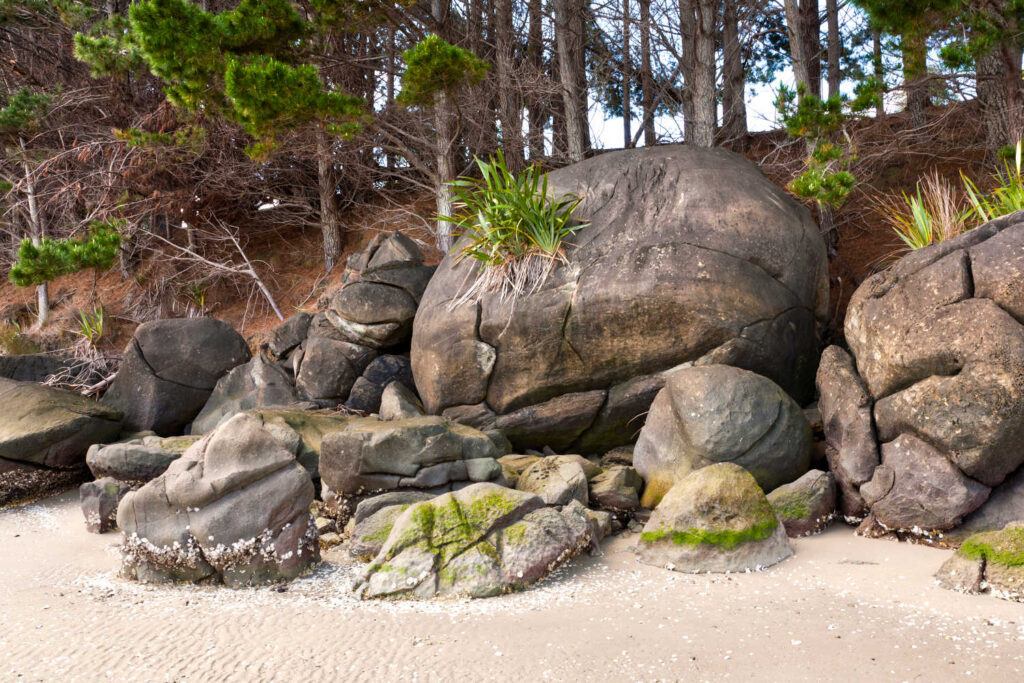

The walk is an easy one for all ages, best done within the two hours either side of low tide. At any time you can walk along the beach but at high tide it can be a bit of a scramble.
A second access to the harbour and the really big boulders has recently been provided by Council. Drive to the end of Waione Road, and where the road forks take the right hand fork, Cabbage Tree Bay Road.Drive about 750 metres, almost to the end of the road. Just past the entrance to number 76 you will see where a small parking area has been created on the right hand side of the road. Park your vehicle here.
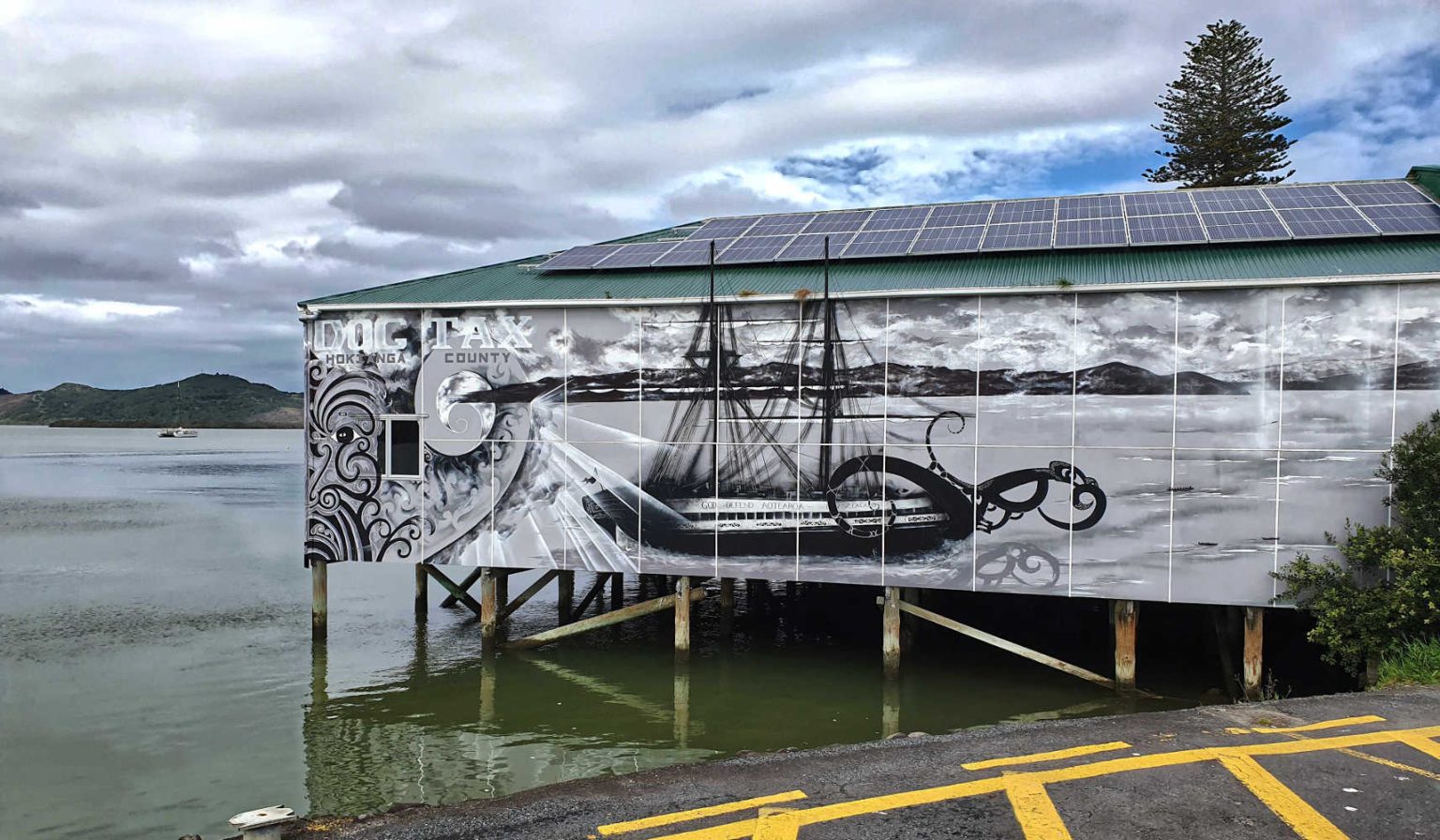
EAT & DRINK
RAWENE
- The Boat Shed is standard kiwi cafe fare in a great location overlooking the harbour as well as adjacent to Clendon House
- Rawene Gallery & Cafe is a delightful mixture of gallery, mismatched china and local warmth making you feel at home. The large picture windows look directly out onto the main thoroughfare.
- Kohukohu has a cafe with standard kiwi cafe fare with a genuine home baked taste to the delicious cakes and sandwiches
- There are general stores in Rawene and Opononi. Takeaway options are available in Opononi with fish n chips on the beach a local favourite.
- Copthorne Hotel in Opononi restaurant is open to the general public
- Hokianga Harbour is sparsely populated with a number of corner grocery stores servicing the locals
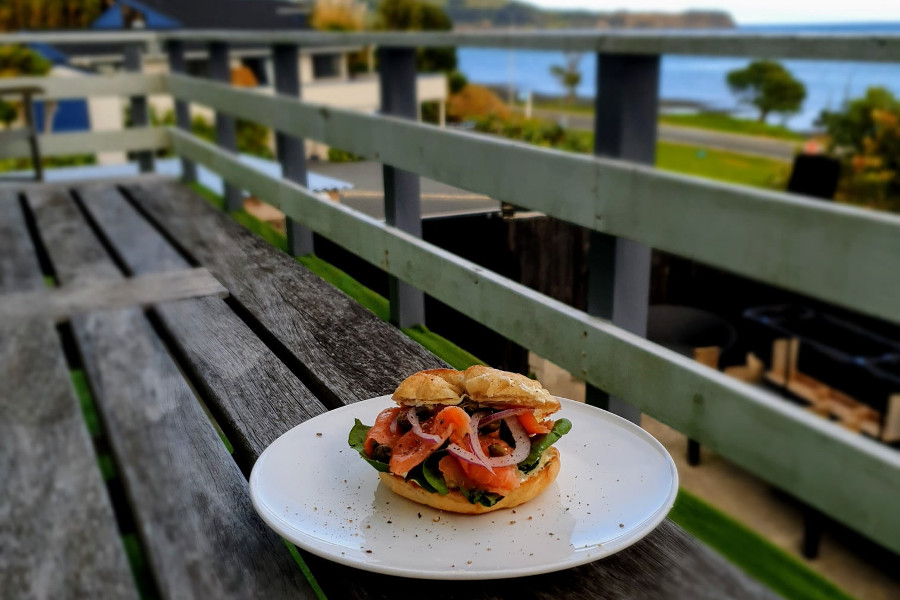
STAY
Awesome Adventures – Homestay
A bespoke experience with Len of Hokianga. A local going way back (probably 800 years and counting) has invested in an adventure whereby locals and overseas visitors are invited to explore the Hokianga harbour with a local. You will hear stories about the first post office, nineteenth century scandals and jet ski the harbour where Kupe landed. It does not get better than that, except of course you get to savour New Zealand home cooking at its best in Len’s kitchen. Remember to ask for the melt in your mouth banana caramel buttered yummy-ness. Slathered with cream of course.
Awesome Adventures offers guest accommodation for families. You do not need to concern yourself about catering and lugging groceries from Auckland or elsewhere. Your weekend is organised. Len will introduce you to the narrative of the harbour from Kupe onwards with humour and laughter. Make sure you have enough room for dessert, the caramel bananas are sure to be on the menu.
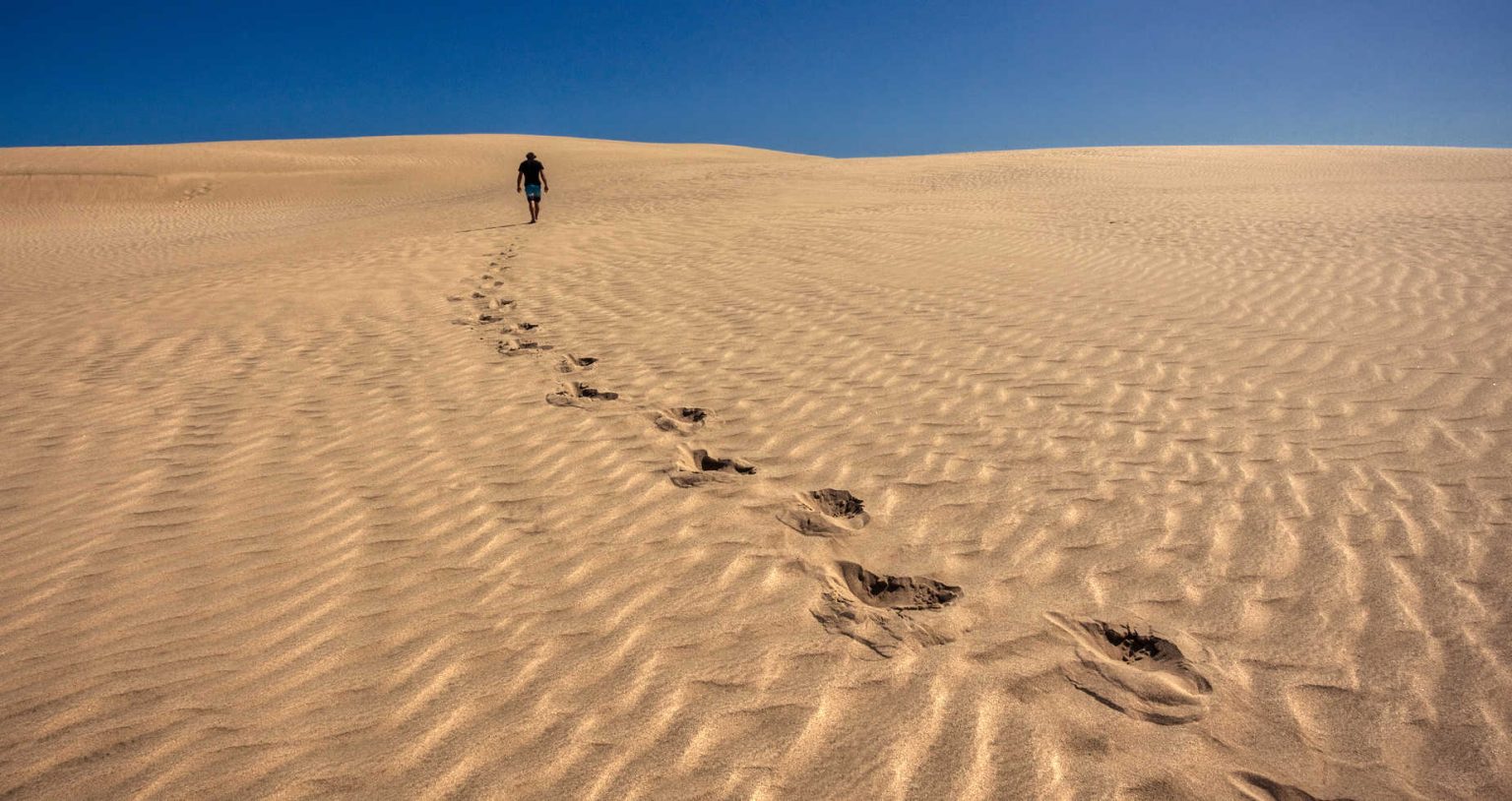
Awesome Adventures Sand Dunes exploration
Sand Dune exploration by quad bike
The Sand Dunes as seen from the South shore of the Hokianga Harbour can be accessed on a quad bike tour (Awesome Adventures) which catches the Hokianga ferry and then skirts around the harbour to the beach tracks and the sand dunes. A 4WD vehicle or quad bike is essential. The sand dunes are a landscape of wind scarred bluffs, temporary shapes constantly buffered by the wind and a testament to the power of nature. The sand dunes can be accessed on land from Mitimiti (15 km drive along the beach). This is an all day excursion.
PREMIUM HOTEL
By the quiet water’s edge of the harbour, the Copthorne Hotel and Resort Hokianga, and its 33 rooms and suites have beachfront views.
STAY – BUDGET OPTION
Rawene Holiday Park is situated on a hilltop, sheltered by native bush with views over the Hokianga Harbour and impressive sunsets. Rawene Holiday Park offers a wide range of accommodation options. You can choose from an ensuite unit, kitchenette cabins, standard cabins or power campervan sites and tent sites. Pets are welcome to Holiday Park by arrangement but are not allowed in Cabins.
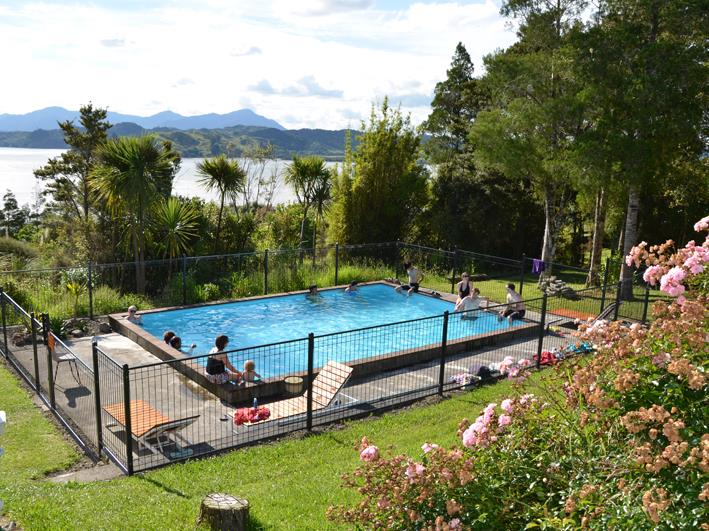
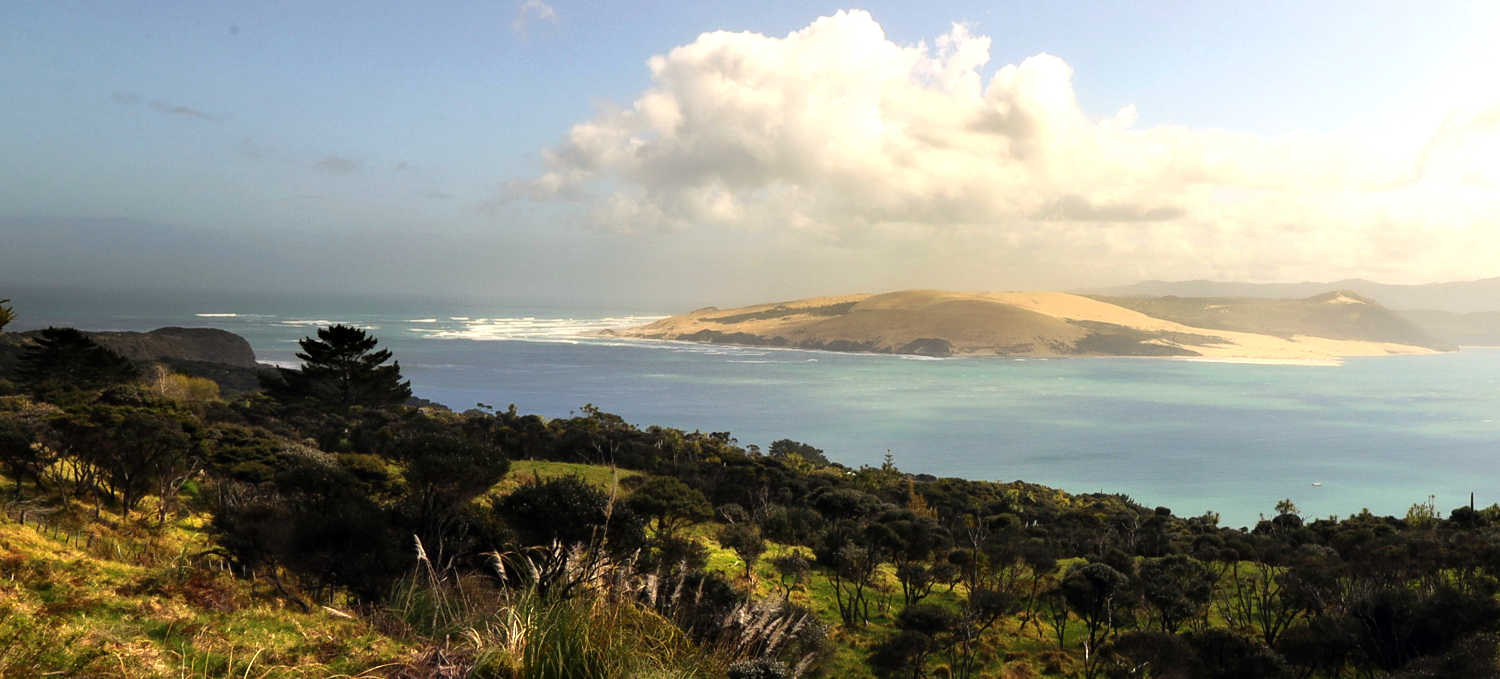
Hokianga Ferry – The Hokianga – a beautiful place
- Bookings: First served, first onboard
- Tickets: Purchased on board ferry
- Payment: Cash, Eftpos, Visa, Mastercard
TRAVEL PACK INFORMATION
- Hokianga Visitor Information Centre is located in Opononi
- Chinese memorial to be shifted after Rawene grave collapse & Northland memorial for 499 Chinese miners whose bodies went down with ship. Chinese stories, SS Ventnor and memorial. A work in progress is a dedicated site for the ancestors whose lives were lost in the Hokianga. The Chinese connection & SS Ventnor sinking in the harbour. Chinese history in Northland History of where the bodies are buried, what happened and the connections with the Chinese community.
- Koutu Boulders. If you would like to walk among the boulders, head about 6 Km towards Kaikohe from Opononi, and you will find Koutu Loop Road on your left. If you are coming from the North or East, head about 10 Km past the Rawene turnoff towards Opononi, through the settlement of Whirinaki and at the foot of the saddle on the Opononi side you will see Koutu Loop Road on your right. It is best to do the walk within two hours either side of low tide.
- Hokianga Ferry Timetable. Ferry Services, Fullers GreatSights operates the Hokianga vehicle ferry between Rawene and Kohukohu. The short crossing on the Kohu Ra Tuarua ferry links the two sides of the remote Hokianga Harbour on Northland’s west coast. The ferry does not take bookings.

The ferry, in the summer peak season can have a considerable queue of vehicles wanting to cross at any one time. The ferry can take a maximum of PAYMENT. You can buy tickets on board the ferry. Pay in cash or use the on-board ATM machine which accepts EFTPOS cards and VISA or MASTERCARD credit cards.
- Brief History of the Hokianga Region edited by Hokianga Historical Society.
BEST BITS TRAVEL GUIDE


